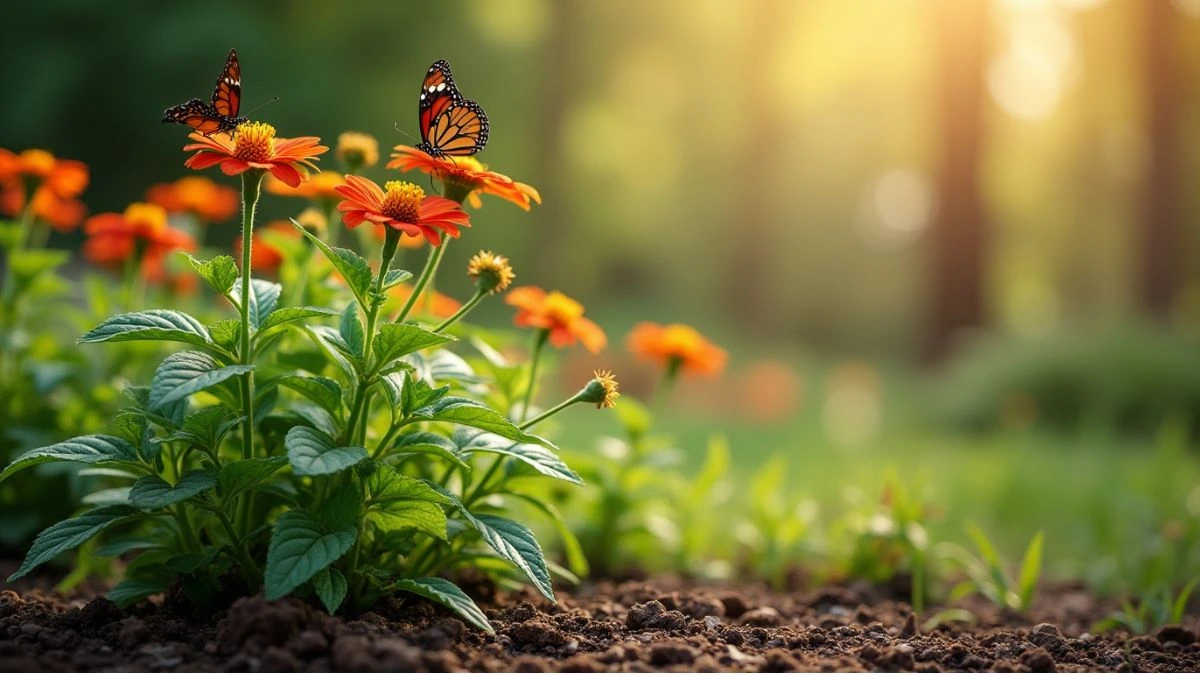Imagine stepping into your garden and being greeted by fluttering butterflies drawn to vibrant blooms. These stunning butterfly plants not only beautify your space but also support pollinator populations. Whether you’re a seasoned gardener or just starting, these tips will help your butterfly garden thrive and make your space a true haven for nature.
Table of Contents
Why Choose Butterfly Plants for Your Garden?
Butterfly plants are not just visually stunning; they also serve an ecological purpose. By planting them, you’re helping to sustain pollinator populations, which play a critical role in global food production. Additionally, they can act as a focal point, transforming your garden into a sanctuary for nature lovers.
Did You Know?
Monarch butterflies rely on milkweed as their sole host plant for laying eggs, making it essential for their survival. Adding this butterfly flower plant to your garden can directly support their lifecycle.
Tip 1: Choose the Right Variety
Selecting the Perfect Butterfly Plants for Your Garden
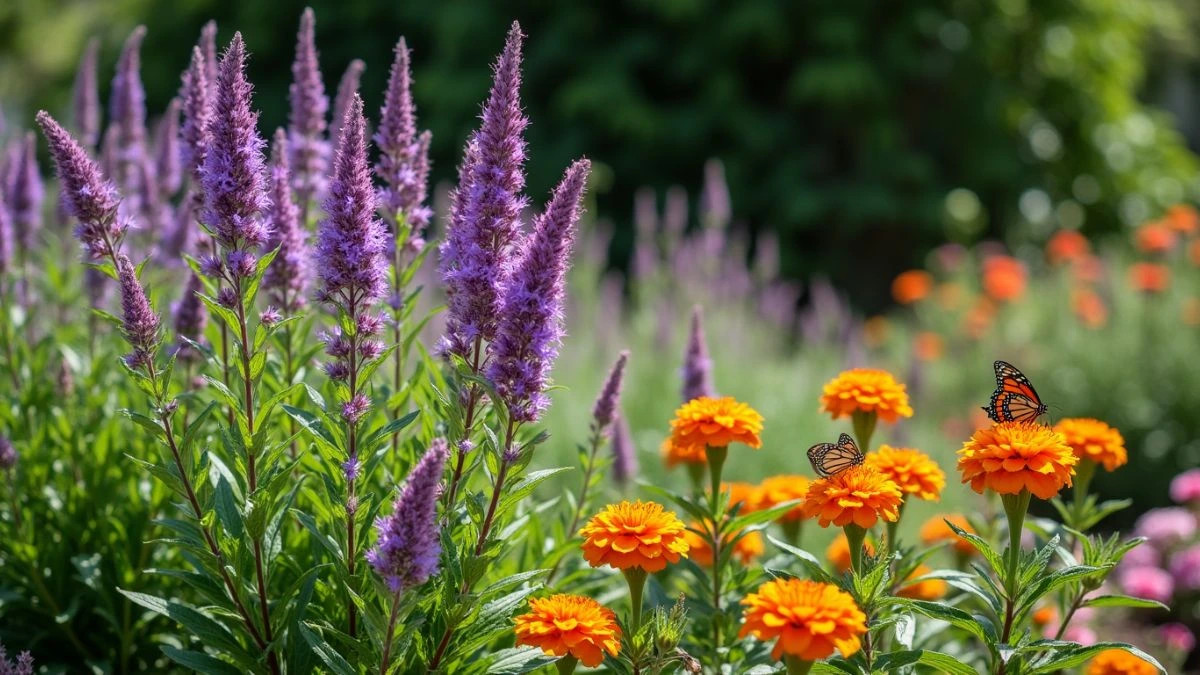
The first step to a thriving butterfly garden is selecting the right variety. Butterfly plants come in various forms, each with unique traits and growing requirements.
Popular Varieties:
- Buddleja davidii (Butterfly Bush): Known for its fragrant, elongated flower spikes.
- Asclepias tuberosa (Milkweed): Essential for monarch butterflies, with bright orange blooms.
- Lantana camara: Produces brightly colored flowers that bloom profusely throughout the season.
Native vs. Exotic Species
Opting for native varieties benefits the local ecosystem and supports indigenous pollinators. For instance, native milkweed is a host plant for monarch caterpillars.
Example:
In the U.S., Asclepias syriaca (common milkweed) is an excellent choice for supporting monarch populations.
Tips for Small Spaces
If you’re working with limited garden space, consider dwarf varieties:
- Buddleja ‘Blue Chip’: A compact variety perfect for containers or small yards.
Pro Tip:
Consult your local nursery for butterfly plant varieties that thrive in your region.
Expanding on Varieties
Did you know that butterfly-friendly plants can be mixed with other perennials to create visually appealing, layered gardens? For example, pairing lavender with butterfly bush not only attracts pollinators but also adds contrasting textures.
Tip 2: Provide Ideal Growing Conditions
Ensuring Optimal Growing Conditions of a Butterfly Bush
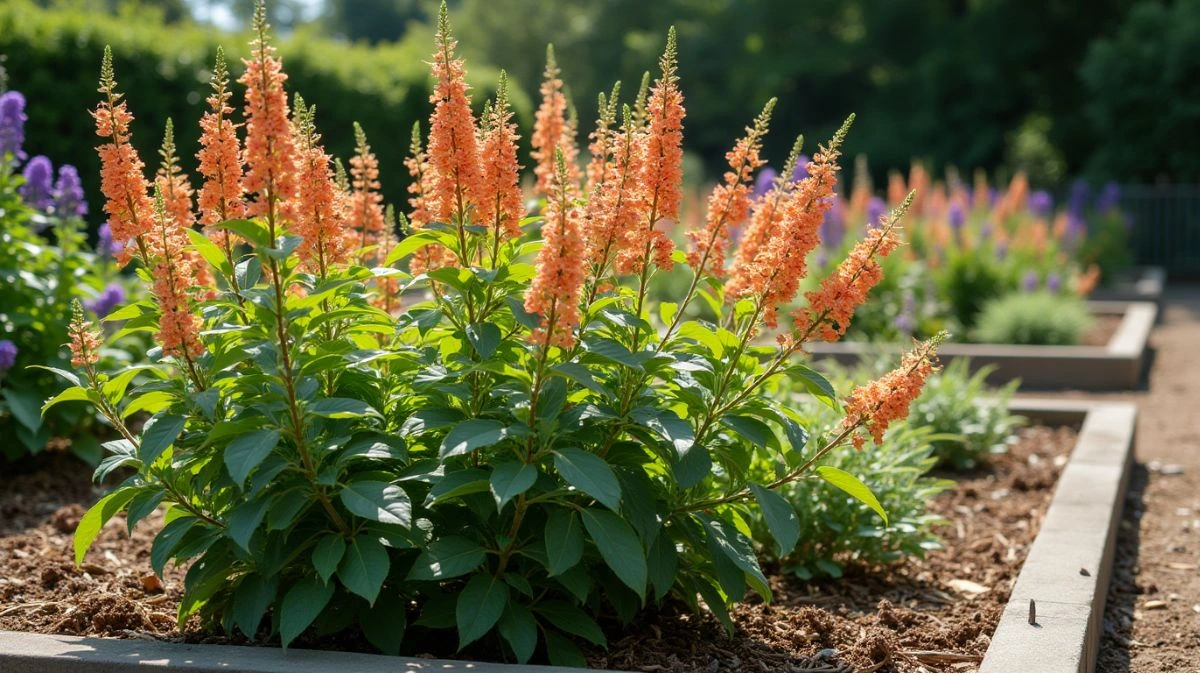
Creating the perfect environment is key to ensuring your butterfly plants thrive. They are relatively low-maintenance but do have specific preferences.
Sunlight:
Make sure the location receives 6-8 hours of direct sunlight each day.
Soil:
Choose well-draining soil with a pH ranging from slightly acidic to neutral (6.0-7.0).
Temperature:
Butterfly plants thrive in USDA zones 5-10, depending on the variety.
Growing Conditions at a Glance:
| Factor | Requirement |
| Sunlight | 6-8 hours (full sun) |
| Soil Type | Well-drained, loamy |
| pH Level | 6.0-7.0 |
| USDA Zone | 5-10 |
Common Issues and Solutions:
- Waterlogging: Avoid overwatering to prevent waterlogging, which can cause root rot.
- Insufficient Sunlight: Leads to fewer blooms and weak growth. Place plants in an area that receives full sunlight.
Pro Tip:
If your soil lacks drainage, consider raised beds or containers to improve growing conditions.
Enhancing Growing Conditions
Mulching is an effective method for maintaining soil moisture and controlling temperature. Spread a 2-3 inch layer of organic mulch around the base of your butterfly flower plant.
Tip 3: Watering and Fertilizing
What Is the Water Requirement of a Butterfly Bush?
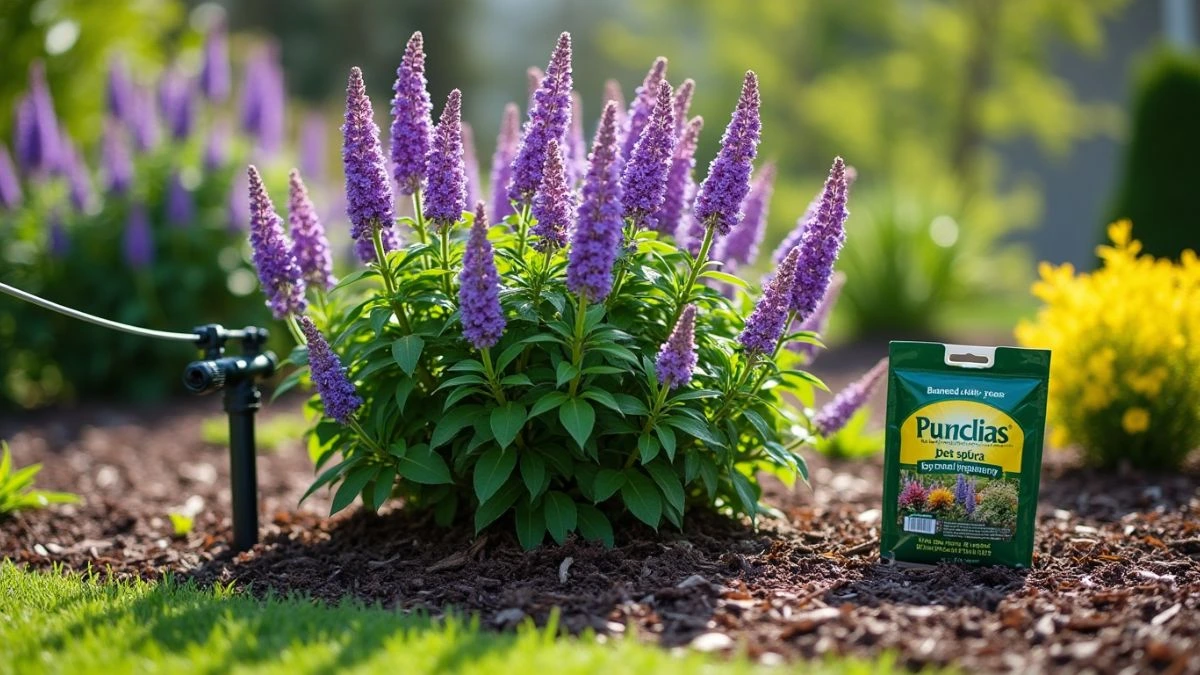
Proper watering and fertilizing are critical, especially during the first year of growth.
Watering Schedule:
- Weeks 1–4: Water every 2–3 days to maintain consistent soil moisture.
- After 1 year: Water weekly or only during prolonged dry spells.
Fertilizer Options:
- In early spring, apply a balanced, slow-release fertilizer such as 10-10-10 NPK.
- Enrich the soil with organic compost or well-rotted manure for a natural boost.
Over-Fertilizing Risks:
Excess fertilizer encourages foliage growth at the expense of blooms. Stick to recommended amounts to maintain a balance.
Example Fertilizers:
- Organic compost for natural enrichment.
- Commercial slow-release fertilizer for consistent nourishment.
Pro Tip:
Apply mulch around the base of the plant to help retain moisture and maintain stable soil temperatures.
Improved Watering Techniques
Use drip irrigation systems for consistent and efficient watering. These systems help prevent overwatering while minimizing water waste.
Tip 4: Pruning and Maintenance
Ensuring Longevity Through Regular Care
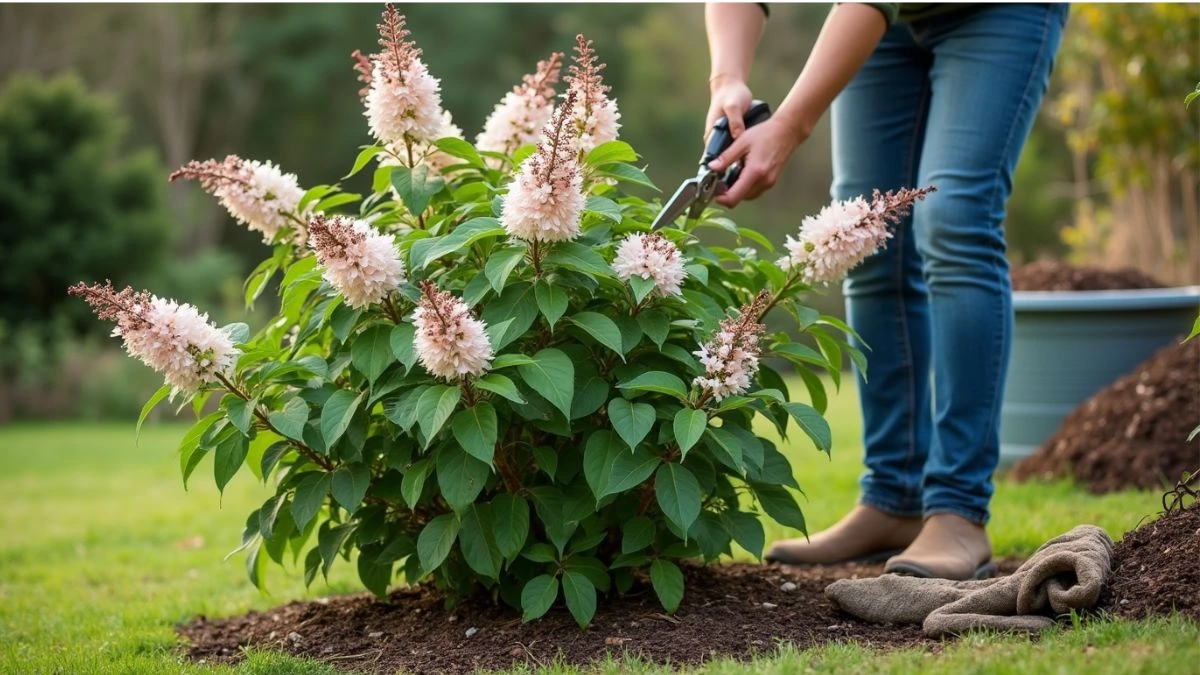
Butterfly plants benefit from consistent maintenance to ensure vibrant blooms and healthy growth.
Pruning Tips:
- Prune during late winter or early spring to eliminate dead or weak branches.
- Cut back stems to a healthy bud to encourage new growth.
Deadheading:
Trim faded blooms to encourage ongoing flowering throughout the season.
Tools and Supplies for Maintenance:
- Pruning shears
- Gardening gloves
- Mulch for weed control
- Compost for soil enrichment
Example:
In colder climates, add a protective layer of mulch around the roots to shield them from frost.
Seasonal Maintenance Tips
In autumn, collect seeds to propagate new butterfly flower plants in the spring. Keep seeds in a cool, dry location during the winter months.
Tip 5: Attracting Butterflies and Pollinators
Enhancing Your Garden’s Appeal
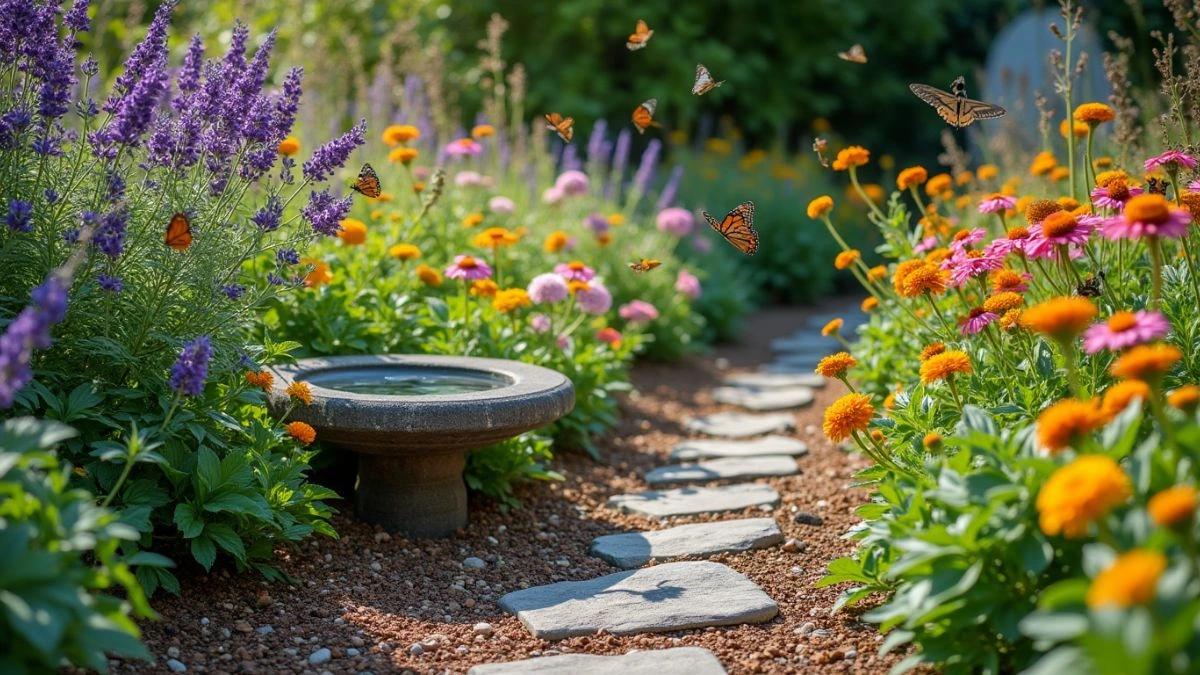
Make your garden irresistible to butterflies and other pollinators with these additions:
Companion Plants:
Include species like milkweed, lavender, coneflowers, zinnias, and marigolds for diversity.
Water Sources:
Provide a shallow birdbath or flat stones for butterflies to perch and hydrate.
Avoid Chemicals:
Refrain from using pesticides or insecticides that harm pollinators.
Creating a Pollinator Habitat
Transform your garden into a thriving ecosystem by adding host plants and nectar plants, shelter options like hedges, and water sources.
Pro Tip:
Select butterfly plants with staggered bloom times to ensure a continuous food supply for pollinators throughout the year.
DIY Butterfly Feeder
Create a butterfly feeder using a shallow dish filled with sugar water or overripe fruit. Put it in a sunny location and enjoy watching the butterflies gather around it.
Companion Plants and Pest Management:
- Milkweed: Host plant for monarch caterpillars.
- Lavender: Fragrant blooms that attract bees and butterflies.
- Coneflowers: Nectar-rich flowers that bloom all summer.
- Zinnias: Easy-to-grow annuals with vibrant colors.
- Marigolds: Known for deterring garden pests while attracting pollinators.
Common Pests and Solutions:
Protect your butterfly flower plants from common pests such as:
- Aphids, Spider Mites, and Whiteflies:
- Treat infestations with insecticidal soap or neem oil.
- Introduce natural predators like ladybugs or lacewings.
Creating a Seasonal Butterfly Garden
What Is the Flowering Time for a Butterfly Bush?
Plan your garden for year-round beauty and pollinator support by incorporating plants that bloom in different seasons.
Spring:
- Milkweed
- Phlox
Summer:
- Coneflowers
- Butterfly Bush
Fall:
- Goldenrod
- Asters
Advanced Gardening Techniques
- Layered Gardening: Combine tall butterfly plants like butterfly bush with shorter varieties like lavender.
- Vertical Gardening: Use trellises for climbing varieties to maximize space.
Conclusion
Creating a butterfly-friendly garden not only enhances the beauty of your space but also contributes to the preservation of essential pollinator species like butterflies and bees. By following these detailed tips on choosing the right varieties, providing ideal growing conditions, and maintaining your plants, you’ll establish a thriving and sustainable ecosystem. Incorporating butterfly plants into your garden ensures that your outdoor space becomes a vibrant sanctuary, filled with color, life, and purpose.
Moreover, a well-maintained butterfly garden will reward you with endless blooms, the mesmerizing sight of pollinators at work, and the satisfaction of knowing you’re playing a role in supporting biodiversity. Whether you’re cultivating a small urban garden or expanding a larger space, your efforts will have a lasting positive impact on the environment. So start planting, nurturing, and enjoying the wonders of nature right in your backyard!
FAQ Section
Frequently Asked Questions
- What is the best time to plant these varieties? Spring or early fall is ideal to give roots time to establish.
- What is the water requirement of a butterfly bush? Water every 2-3 days at first, then switch to weekly watering once established.
- Can I grow butterfly plants in pots? Yes, choose a dwarf variety and ensure the pot has good drainage.
- Do butterfly plants attract bees as well? Yes, they also attract bees and other beneficial pollinators.
- Do these plants require full sun? Yes, they thrive in full sun with at least 6-8 hours of direct light daily.
- How can I propagate them? Propagate through cuttings in summer or by sowing seeds in spring.
- What is the lifespan of these plants? Most live for 5-10 years with proper care.
- Why aren’t they blooming? Lack of sunlight, over-fertilizing, or improper pruning may be the cause.
- Are these plants deer-resistant? Yes, most are deer-resistant.
- Can they survive winter? In colder zones, they may die back but often regrow in spring if roots are protected.


